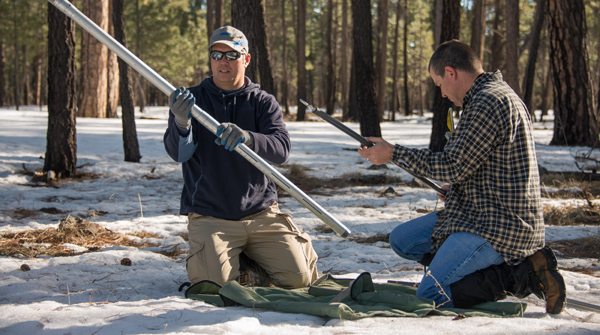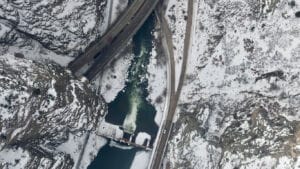After an unprecedented six consecutive runoff seasons of below-median inflow into the reservoirs on the Salt and Verde rivers, pardon Salt River Project water managers for feeling a bit greedy these days.
The final numbers for the January-to-May runoff season have been counted, and the 970,440 acre-feet of rain and snowmelt that made their way into SRP’s reservoirs this winter was about 140 percent of normal and nearly double the 30-year median of 534,336 acre-feet.
That’s significantly more than the previous six-year period, which averaged about 280,000 acre-feet a year with a high of 444,788 acre-feet in 2013 to 148,000 acre-feet in 2014, which was the eighth-driest year since SRP has been keeping records for the last 119 years.
So, who’s complaining? Not Charlie Ester, SRP’s manager of Surface Water Resources, who says the 2017 runoff year “was very good, but not great.” What started out as a very wet January and February turned into a much drier March and April, he said, with most of the snow at higher elevations having melted off early after initial indications projected a chance at filling up all six of the Salt and Verde reservoirs.
“I get a lot of questions about the drought, such as if this healthy winter ended the drought cycle in Arizona,” he said. “No, the drought cycle isn’t over, but we did have a very productive winter – the best winter since 2010. In fact, if some of the larger storms we had early on in January and February would have dropped more on the Salt River side than the Verde, we might have even filled Roosevelt Lake this winter. Now, that would have made for a great runoff season.”
Because more runoff occurred on the Verde River than the Salt this year, SRP initiated a low-level water release from the Verde on Feb. 10 when the forecast of another weekend storm combined with the rapidly filling Horseshoe and Bartlett lakes left no place for additional storage on the Verde.
This runoff season, SRP spilled more than 110,000 acre-feet of water over Granite Reef Dam – nearly all from the Verde River. The last winter in which water was released through the Valley was in 2010, when about 1,430,000 acre-feet of runoff filled the Salt and Verde reservoirs.
Ester said Theodore Roosevelt Lake, which holds about two-thirds of the combined water SRP stores, maxed out in April at about 76 percent – the only SRP reservoir that didn’t reach 100 percent of capacity this winter. Also, C.C. Cragin Reservoir, located on East Clear Creek and a critical water supply to Payson and communities in northern Gila County, was filled by Feb. 12 and continued to spill water through April 9.
With the peak water demand season upon us, the six SRP reservoirs combined are currently at about 68 percent of capacity – up from about 49 percent one year ago. The total Verde River system stands at 62 percent full, while the Salt River reservoirs are at 69 percent of capacity. For updates on lake levels, visit the SRP Daily Water Report at https://www.srpnet.com/menu/water/damslakes.aspx.
Roosevelt Lake today stands at 64 percent full with more than 1 million acre-feet of water, with still about 578,000 acre-feet of available space. Every other reservoir on the Salt and Verde rivers is still more than 90 percent of capacity except for Horseshoe Lake, which stands at 12 percent during its usual summer drawdown.
SRP is the largest raw water supplier in the greater Phoenix metropolitan area, delivering about 800,000 acre-feet annually to agricultural, urban and municipal water users.




